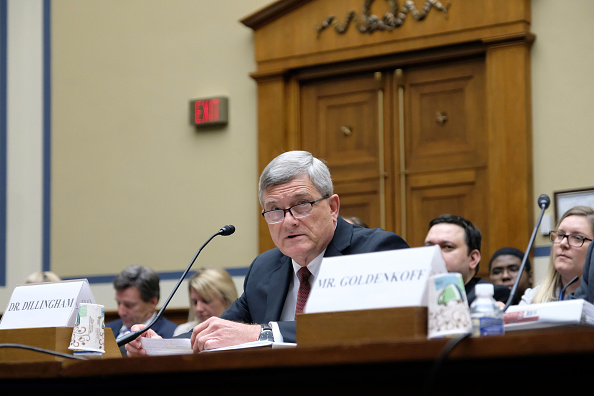The Trump administration’s decision to truncate the 2020 census “poses a myriad of risks” to the count’s accuracy and completeness, an inspector general report said Monday.
Top Census Bureau officials, including its President Trump-appointed director Steve Dillingham, are still not sure who within the administration made the decision to speed up the count. Their “consensus” view within the bureau is that the acceleration will “negatively impact the accuracy,” according to Commerce Department Inspector General Peggy E. Gustafson’s report.
The Trump administration currently faces multiple lawsuits challenging the move. In the litigation, the Justice Department has blamed Congress — and its refusal to extend the statutory deadlines that the Census Bureau faces for delivering the count’s data — for why the Census Bureau is now forced to rush through the census’ final phases.
Back in April, Commerce Secretary Wilbur Ross — who oversees the decennial census — requested that those deadlines, which included a Dec. 31 deadline for producing data for congressional apportionment, be pushed back by four months by Congress. The House approved the request in COVID-19 legislation it passed in May, while the Senate has yet to formally back the move.
The perception within the Census Bureau is more complicated than what the DOJ has presented in court, according to the OIG report. Many Census officials said that they believed they lost the support for extensions from both Congress and from the administration itself.
The report noted that in mid-July, Commerce Department officials began asking Census officials questions about accelerating the count, while the Office of Management and Budget submitted an appropriations request to the Senate that — rather than seek the extensions — asked for more funding instead
At least two senior Census Bureau officials, according to the report, believe that the decision to expedite the count was linked to the policy President Trump announced on July 21 that said that undocumented immigrants would be excluded from the data used for apportionment. If the extensions were granted, then there would be a chance that Joe Biden would be president by the time apportionment happened.
“I think that the Presidential Memorandum had to have played some role in — in changing … what I would say the [A]dministration’s policy is … on the deadline,” a senior bureau official told the OIG.
The Census Bureau announced that it was speeding up the count on August 3. Its plan to do so was developed in just a few days, after bureau leadership received a July 29 call from a top Commerce Department official directing it to come up with a timeline to deliver the apportionment data by the end of the year.
Other inquiries into the move have identified that official as Karen Dunn Kelley, a top Ross aide. The office of inspector general is now seeking an interview with her.
Congressional Democrats had said they hoped to get language extending the deadlines in must-pass spending legislation that would avert a government shutdown at the end of this month. The latest summary of the House’s current proposal — which Senate Majority Leader Mitch McConnell already said he opposed — does not include such a provision.
In the lawsuits, a federal judge in California already issued a temporary restraining order blocking the bureau from winding down the count, and she is hearing arguments later Tuesday on whether to convert that order into a preliminary injunction.
On Monday, a three-judge panel in Maryland heard arguments in a lawsuit that targeting both the anti-immigrant apportionment policy and the move to rush the count.
Already, a three-judge panel in New York has declared the apportionment policy unlawful, and the Trump administration is taking that case to the Supreme Court.
Under the expedited timeline, self-response and follow up data collection activities in the field would end on on Sept. 30, instead of Oct. 31, as was contemplated in the extension request sent to Congress in April. Once data collection ends, the Census Bureau will only have two and half months under the expedited timeline for processing the data, a stage that usually lasts 4-5 months.
The OIG report said Census Bureau officials were confident that they could complete data collection by the end of the month, though they said that COVID-19, wildfires and other disasters outside the bureau’s control still posed a threat.
The bigger concern around the truncated plan is the limited time for processing and quality review, and senior bureau officials identified “several risks” in that phase, according to the report.
“Bureau leaders continued to believe that the statutory extension was preferable, and would give the Bureau the best chance to create a high-quality, usable census,” the report said.







Good lord, left hand meet right hand.
“Top Census Bureau officials, including its President Trump-appointed director Steve Dillingham, are still not sure who within the administration made the decision to speed up the count.”
Uh huh.
LOL, everyone knows who ordered this and that the Republican party fully supports the order.
“I could tell you, but then they’d kill me.”
My first reaction too.